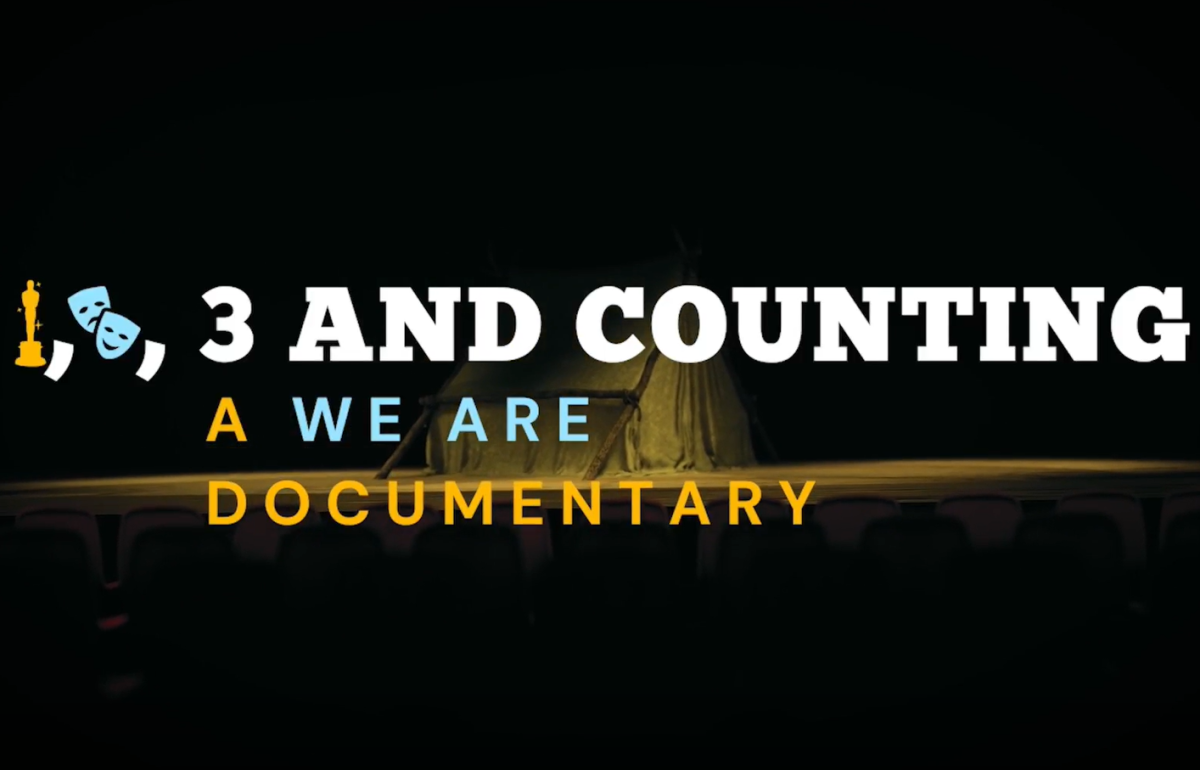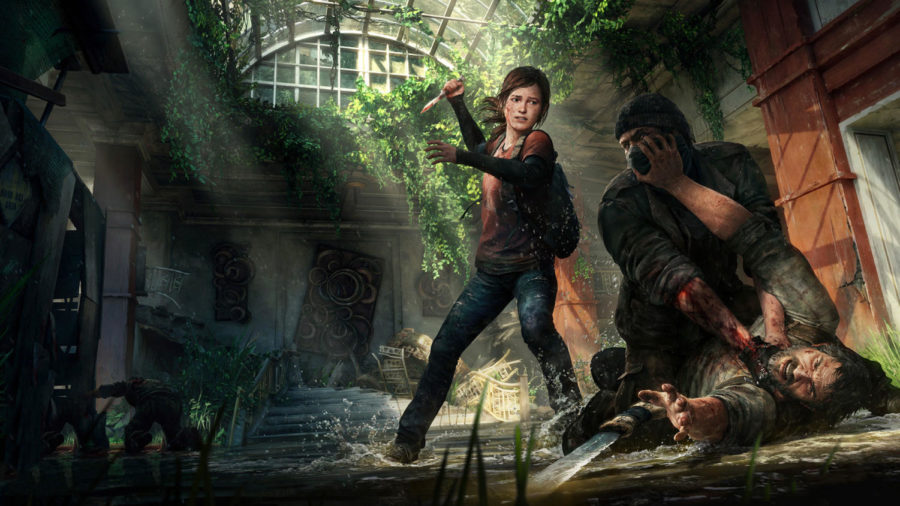The Lost Art of Video Games
July 20, 2022
The Last of Us
Chapter one: Outbreak of the video game epidemic
Video games…always looked down upon by older generations for being “a waste of time” and viewed with disgust for “making people anti-social” and despised as they “cannot tell good stories” (because only BOOKS can tell good stories, right?).
It’s truly sad that games have gained such a poor reputation in the eyes of (most) adults. Sure, there are plenty of kids who have become addicted to basic mind-numbing video games, such as ‘Call of Duty’ and (dare I say) ‘Fortnite’’, so much so that they have almost lost any sense of reality. However, these examples have perverted the true essence – the fact that video games are an art form in and of itself.
Games are art.
Video games, much like sport, have brought people together all across the globe, whether it be through online cooperation or general discussion over the media and in day-to-day life. One of the beautiful things about story-based video games that makes them unique is the opportunity to BECOME the characters; as the player, you spend hours on end as these characters, watching them grow, develop, connect with others, guiding them through various obstacles, all of which builds a deep, emotional connection between the player and the characters that cannot be replicated in books or movies.
The Last of Us is a perfect example of the elegance of storytelling via the medium of video games…it tells a story that proves video games aren’t a waste of time and can have real world impacts.
Chapter two: A beautifully ugly world
The Last of Us is set 10 years after a devastating fungal virus has ravished the planet, turning people into violent monsters (zombies if you will). Joel and his partner Tess make a living by smuggling items in and out of their designated quarantine zone (not toilet paper I hope…) . After being approached by an organisation known as the Fireflies, Joel is instructed to transport young Ellie – who possesses immunity to the virus – to the Firefly headquarters where they can extract a vaccine from her. With the pieces in motion, Joel and Ellie embark on a brutal journey across the USA.
The plot is fairly basic, but the characterisation and world building are deeply complex, where “endure and survive” has become the only governing law. The Last of Us portrays a gritty, cruel and vicious world that has become rotten and bleak; at every turn lies another threat, whether it be infected or human; few can be trusted. This barbarous environment has made most into heartless killers, with only a few that show empathy or obtain some sense of humanity. Though the graphics (in reference to the remastered version) might not be quite up to the standards of most games that are being released today, they still manage to hold up really well and the maps are beautifully designed.
Maps are very distinct and consist of large overgrown cities, snowy holiday houses, abandoned quarantine zones, flooded tunnels, and much more. Furthermore, there were some subtle details that I appreciated, such as the realistic placing of resources; ammunition, medical equipment, weapons and supplements are all found in logical spaces rather than being randomly scattered across the map.
Gameplay is really solid, but incredibly intense (which is a positive). The Last of Us is completely unforgiving, with scarce resources forcing you to be conservative of everything you have – ‘make every shot count’. Enemies (both human and infected) are not easy to kill; basic zombies generally require multiple shots to kill, let alone the other three types of infected, each more dangerous than the last. Humans are no better than infected, they have good aim making it risky to move from one position to another, and the AI are rather intelligent, communicating with one another in attempt to flank your position and responding to your actions.
Stealth is your best friend in this game, you want to avoid fights rather than start them, because you will probably lose (although there are plenty situations where you are forced to fight); if you get too close to an enemy…you’re dead. The game also introduces a really interesting stealth mechanic called ‘listen mode’, which essentially allows you to focus your hearing and spot enemies through solid objects such as walls and tables. Even though this mechanic is commonly seen in stealth-based games, what makes it unique is it’s unreliability, only permitting you to spot enemies when they are making noise, when an enemy is silent/still or outside of a certain proximity they cannot be seen.
Combat in The Last of Us is raw and brutal; every hit feels weighted and painful; people die savage and sudden deaths; aim isn’t perfect; you will not always have the upper hand in melee combat; enemies will and do inflict serious damage.
Chapter 3: Love, loyalty and companionship
(WARNING: I will be getting into spoilers in this next chapter, so, to sum up, if you haven’t played the game…PLAY IT!)
Despite the enjoyable gameplay, the strongest aspect of this game is the relationship that blossoms between Joel and Ellie (two of the best characters I have ever come across) over the course of their journey; the characterization is on point in this masterpiece of a story. Joel begins as a broken man after suffering the loss of his daughter during the opening few minutes of the game, a sequence which had me genuinely tearing up. Joel has become a closed off, hardened survivor, with little trust for anyone but his smuggling partner Tess. Ellie is young, she has grown up during the pandemic surrounded by nothing but pain and violence, the old world is nothing but a myth to her; now something she has had to learn about through books and television. Though she has been exposed to so much horror and is more than capable of killing, Ellie is still a kid, she hasn’t completely lost her childish nature, she is goofy and naïve, constantly in awe of the outside world and eager to learn about society before the pandemic.
As Tess and Joel escort Ellie to the Fireflies, Tess is bitten and later sacrifices herself to save them, leaving Joel and Ellie on their own. Joel is bitter towards Ellie, keen to get her to the fireflies so he can take his reward and leave. Yet throughout their journey, the life-threatening situations they are placed in, the vulnerable conversations they have with each other and the time they spend together brings them closer, developing a “father-daughter” like relationship that becomes unbreakable.
By the end of the game, Joel and Ellie reach the Fireflies – however, due to a previous encounter with infected, Ellie is knocked unconscious. The fireflies take Ellie to be operated on whilst Joel waits with anticipation, until he is informed that the surgery to extract a cure from Ellie will inevitably kill her. Fuelled by his fatherly love for Ellie, Joel slaughters his way through the Fireflies and rescues Ellie.
The excellence of this ending is its moral ambiguity; the logical view suggests that Joel’s decision was wrong, as he sacrificed a potential cure that could have saved millions (‘the needs of the many out-weigh the needs of the few’); on the other hand, Joel’s actions are completely understandable considering all he has been through, he cannot afford to lose another daughter…he is a man who loves someone. This ambiguity allows for the player to ask themselves, ‘what would I do?’
This is the reason The Last of US has such sensational characterisation, there are no heroes or villains…simply put, there are humans. The apocalyptic context enhances this notion, when people are placed in a situation where it’s survival of the fittest, it brings out both the worst and the best in humanity; people will do horrible things when it’s to protect themselves and those they love.
Chapter 4: Keep finding something to fight for
The Last of Us is a story about a relationship that blooms in a world shrouded by grief and misery; it is a story about the lengths people will go to as a means of protecting those they care about, something people use to justify their sins; it is a story that uses the darkness to bring forth the light. Video games are not just senseless pieces of entertainment, they’re not a waste of time…they’re art, and The Last of Us proves that.













